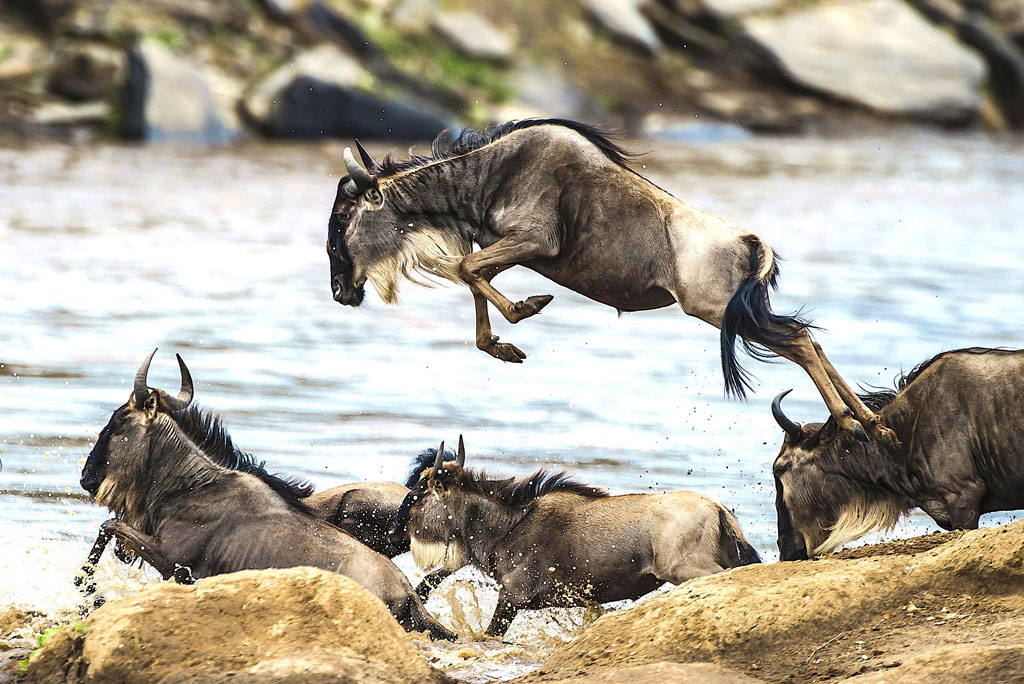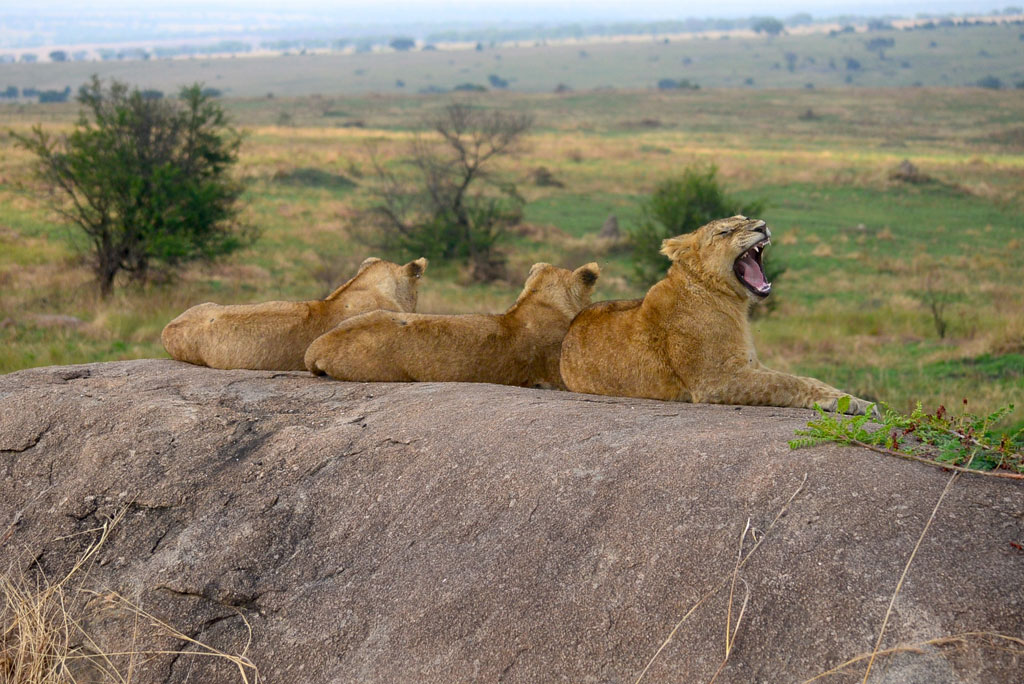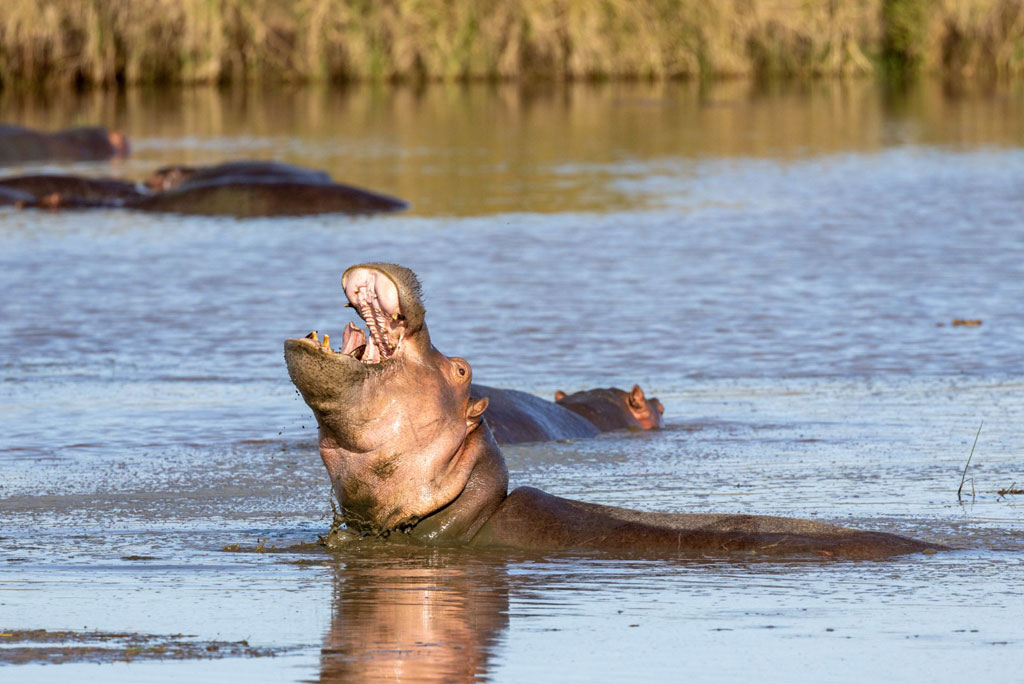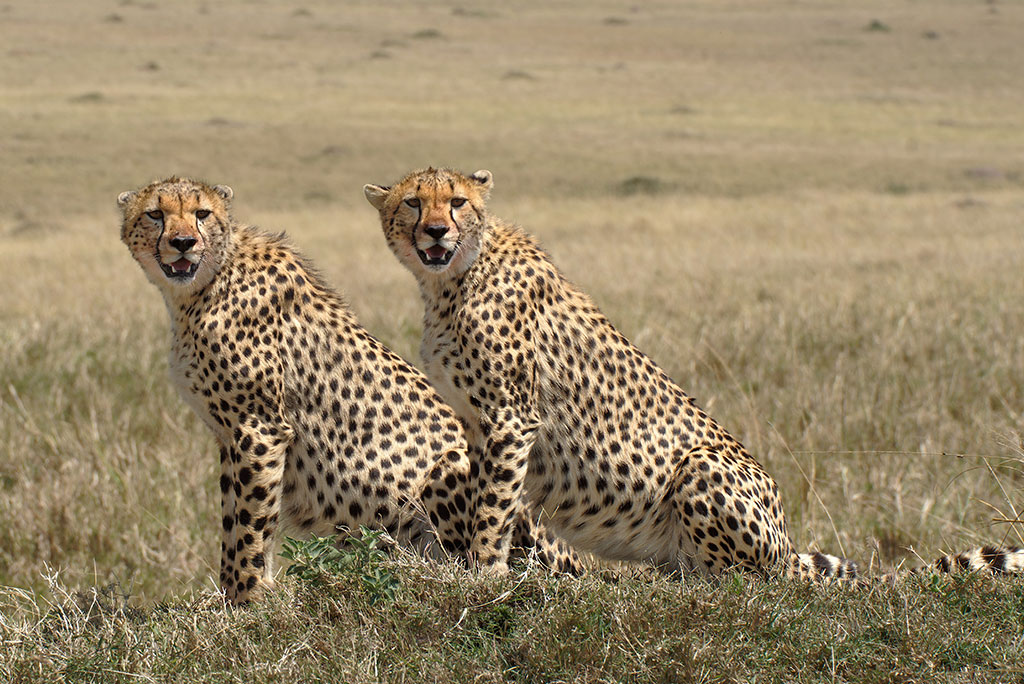SERENGETI SAFARI

About Serengeti
This is Tanzania’s oldest and most popular National Park. It is a world heritage site and one of the Seven Natural Wonders of the World being home to the well-known Wildebeest Great Migration and arguably the most scintillating game-viewing site in all of Africa, including big mammals, big cats and an amazing variety of herbivorous and carnivorous animals. The Central Serengeti plains is the richest wildlife habitat in the park, featuring the Seronera River, which provides a valuable water source in the area and therefore attracts wildlife representative of most of the Serengeti’s species.
The Highlights Of Serengeti
Great Migration
The Great Migration is a breathtaking spectacle that showcases Africa’s most famous and incredible wildlife event where over 2.5 million wildebeests, zebras, and antelopes travel in a majestic clockwise pattern around the Serengeti and Maasai Mara ecosystems in search of water and green pasture. Covering over 1,200 miles annually at predictable times, this migration is also a time for mating and birthing, adding to the natural wonder of this remarkable journey.
Wildlife
The Serengeti ecosystem is a vast expanse of land that supports an incredible abundance and diversity of wildlife including the renowned Big Five: lions, elephants, leopards, buffalo, and rhinoceros (although black rhinos are rarely seen). In addition to these iconic species, the Serengeti is home to giraffes gracefully roaming the savannah, cheetahs stealthily hunting their prey, spotted hyenas scavenging for food, and black-backed jackals patrolling their territories. The landscape is also dotted with warthogs busily foraging and a great variety of antelope species such as impalas, gazelles, and elands.
The Grumeti and Mara Rivers are home to grunting hippos wallowing in the shallows and gigantic, prehistoric-looking crocodiles basking in the sun. During the annual wildebeest migration, these rivers become the dramatic stage for the thrilling wildebeest river crossings, where the crocodiles showcase their feeding frenzy as they prey on the migrating herds.

Scenery
The Serengeti’s vast landscape is absolutely breathtaking with its untamed wilderness famous for its grassland plains, rocky outcrops, and riverine forests. The central east and south feature the infinity plains, while the Western Corridor, including the Grumeti and Mbalageti Rivers, is characterized by riverine forests that lead toward Lake Victoria. The Lobo Hills area is known for its giant granite boulders and further north, the Mara River is the location of the iconic wildebeest migrations and river crossings.
Activities
When visiting the Serengeti, game drives are a great way to explore the area and see the wilflide. You should plan for two separate drives, one in the morning and one in the afternoon as the animals are most active at that time. Alternatively, you can opt for a full-day drive with our special packed lunch. If your budget allows, consider adding a hot-air balloon safari to your itinerary for a unique aerial perspective of the Serengeti and after the balloon safari, enjoy a champagne breakfast in the bush. Sundowners are also very popular here when you wind down and take in the picturesque view of the African savanna against a gorgeous sunset, with a drink in hand and the soothing warmth of the campfire beside you. Additionally, some camps offer walking safaris for a different way to experience the wildlife and landscape of the Serengeti.
Serengeti Weather & Climate
The weather in the Serenegti remains generally pleasant throughout the year, with the exception of heavy rains, which typically occur from the second week of March to mid-April. There is also rain in the rest of April, May, and November, but it hardly interferes with game drives. When it rains, it mostly occurs at night or in the late afternoon, from around 3 pm. If it rains during the day, it is usually a short shower or heavy rain that lasts for a few minutes.
The temperature in the Serengeti ranges between 25°C/77°F and 27°C/81°F during the daytime but it can get chilly at night and in the early mornings. Therefore, warm clothing is recommended for early morning game drives and evenings.

Best time to visit the Serengeti
The Serengeti is incredible all year round, but certain areas are better to visit at specific times. The Central Serengeti (Seronera Area) is one of the richest wildlife habitats in the park. It features the Seronera River, which provides valuable water and attracts a wide variety of wildlife species. Due to their expansive plains, the central east and central south of the Serengeti have a large population of resident predators.
Ndutu, nestled in the Southern Serengeti (and Ngorongoro), is a place of profound seasonal change. It is the birthplace of the Great Migration, where the wildebeest pauses to give birth, transforming the landscape into a bustling nursery. The best time to witness this spectacle is between January and early March, during the wildebeest calving season.
The migration is in the Western Corridor around June, while July to October are the best months to witness the wildebeests crossing the Mara River. Wildlife viewing in the Lobo Peaks area is best around August and September.
Pros & Cons Of Serengeti
Pros
- Exceptional wildlife viewing throughout the year
- Home to the Annual Wildbeest Great Migration
- Unique landscape of Seronera (infinity plains) feel like authentic Africa
- Best destination for spotting predators
- Wide range of accommodations from standard level to high-end exclusive lodgings
- Serengeti hotair balloon safaris
Cons
- The Seronera area (heart of Serengeti) is usually crowded, especially in July and August.
- It gets very crowded at the Mara River crossings especially in July & August
- The migration’s precise timing is impossible to predict.
- Safari days in Serengeti are generally more expensive compared to other destinations

Serengeti Frequently Asked Questions
What is the best time to visit the Serengeti?
The best time to visit any safari destination is from July to October when the animals are concentrated around limited water sources, making them easier to spot. However, the Serengeti is generally excellent throughout the year, especially with an experienced and professional guide. Our preferred times to visit the Serengeti are late April, May, June, and November through February. During these periods, the Serengeti is lush and the weather is great, unlike July to October when it is more hot, dry and crowded. The green season also provides ample opportunities to see most cubs.
What Kinds Of Animals Are Commonly Seen In The Serengeti?
The game drives in Serengeti are truly remarkable, offering exceptional opportunities to spot nearly all the animal species found in East Africa, including the renowned Big Five. Four of the Five are more commonly sighted animals: lions, elephants, leopards, and buffalo. While rhinos are less frequently spotted, it’s possible to increase your chances by opting for a special Rhino tracking experience in Central Serengeti (Moru). In addition to the Big Five, you can expect to encounter giraffes, cheetahs, spotted hyenas, black-backed jackals, various antelope species, a significant number of hippos, and a diverse range of birdlife.
How Much Time Is Needed For a Serengeti Safari?
Two nights minimum are required if you are just visiting the Central Serengeti, but if you are interested in tracking the Great Migration, you will need one or two additional nights. The Serengeti is simply amazing and has so much to offer in terms of wildlife and landscape, so there is no dull moment in the Serengeti. Additionally, the Serengeti is the furthest north of the parks making up the Northern Circuit, so more time is needed to be able to travel there and enjoy it fully.
What is a Serengeti Safari Like?
The Serengeti offers a once-in-a-lifetime adventure! Unlike any other park in Africa, this top-of-the-bucket-list safari destination is known as the wild heart of Africa. It offers unparalleled experiences with its exotic nearly infinite plains, incredible wildlife, and is home to the Great Migration.
How Are Game Drives Conducted In the Serengeti?
You have the option to do game drives in the Serengeti in different segments based on your preferences. You can choose to do an early morning drive (departing with a breakfast box) that usually starts between 6:00 am and 6:30 am, return for lunch, and then depart for a later afternoon drive (from 3:00 pm) until dusk. Alternatively, you can opt for a full day game drive, departing with breakfast and a packed lunch, and then returning later in the evening for leisure, dinner, and overnight stay. Full day game drives offer great opportunities to see and experience a lot.
How much does a Serengeti safari cost?
The Serengeti is considered one of the pricier safari destinations due to its remote location, government fees, and accommodations. Our Serengeti package starts at $550 for double occupancy. However, since the Serengeti is often part of combined safari trips, our prices begin at $488+ per person per day, based on double occupancy in midrange accommodations and excluding international flights.
